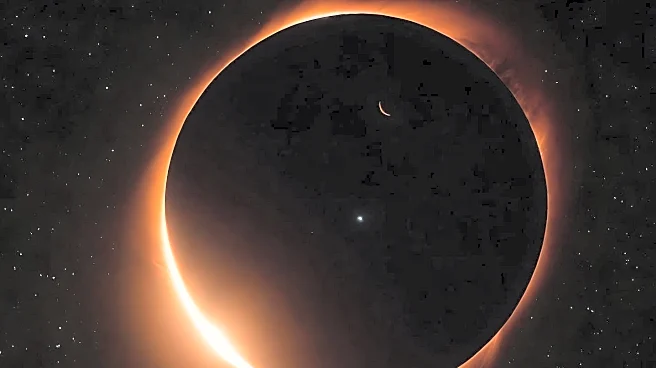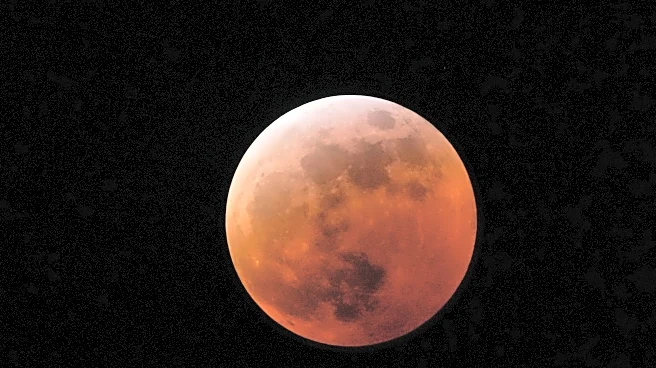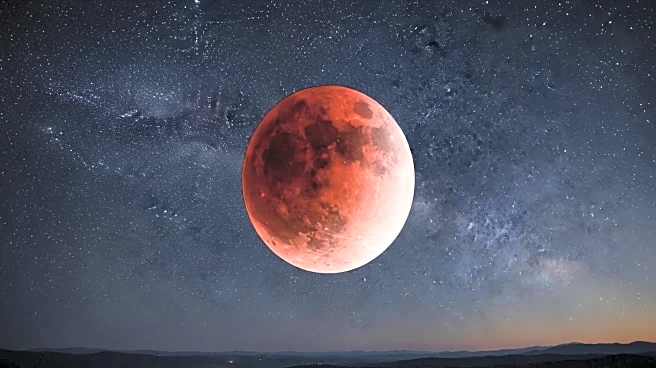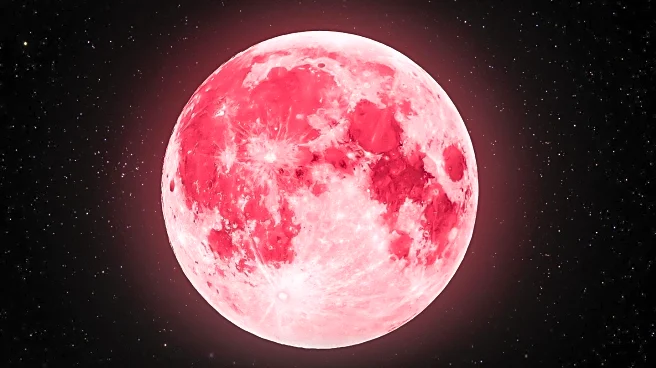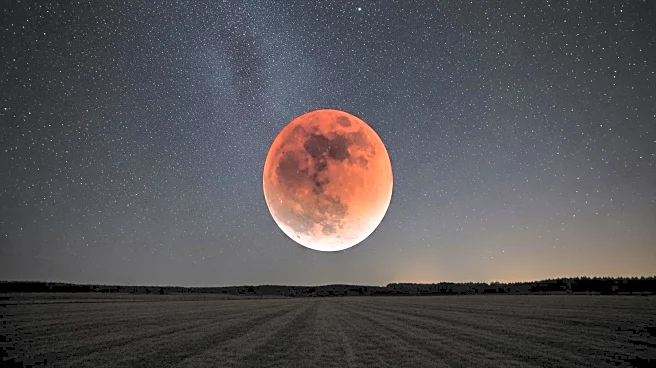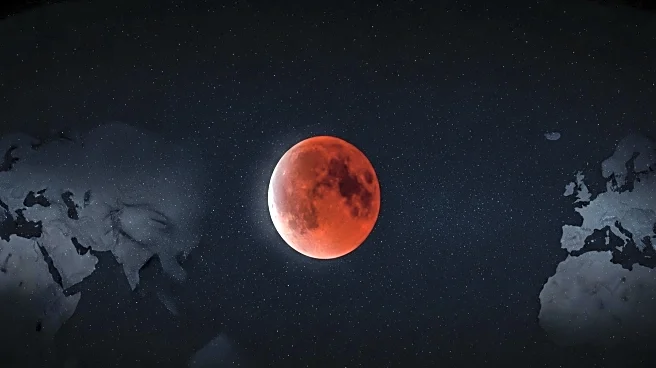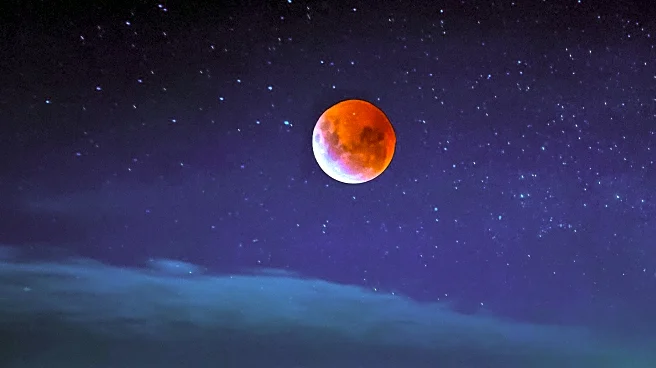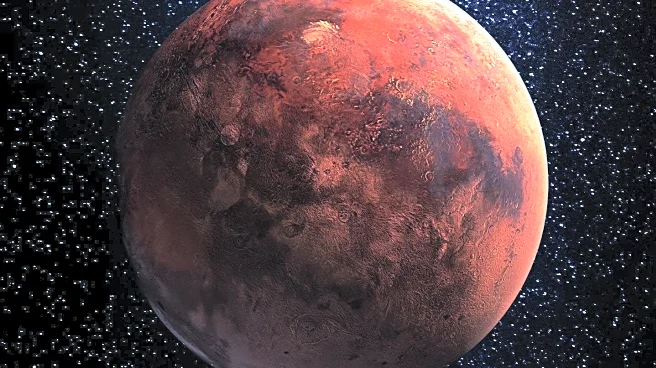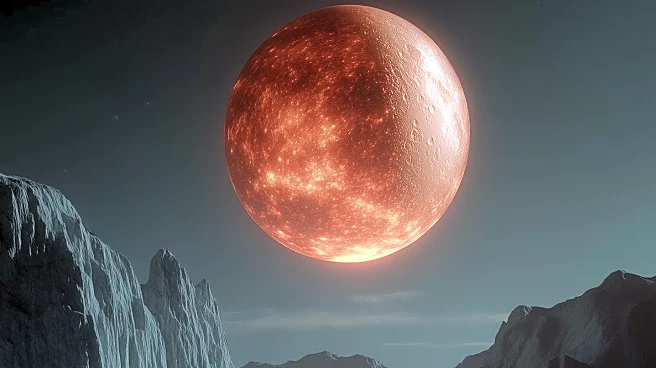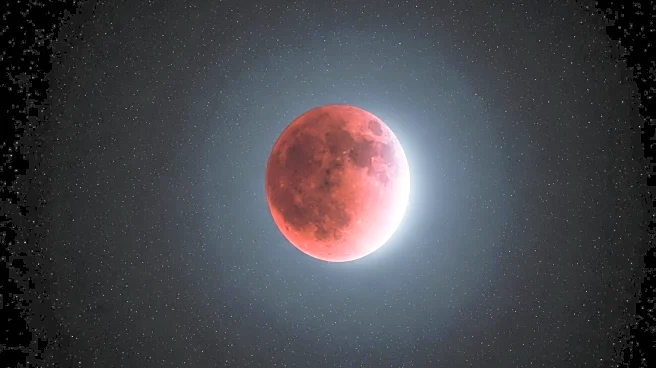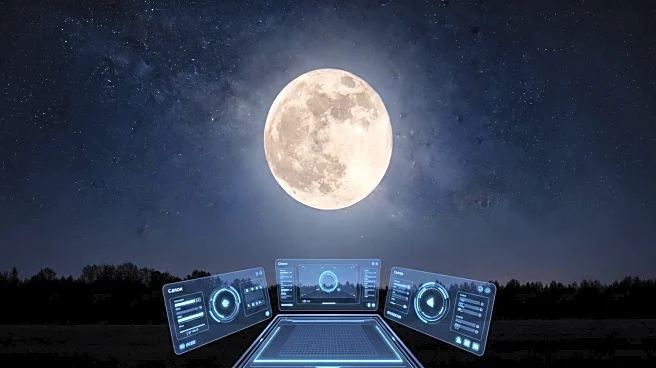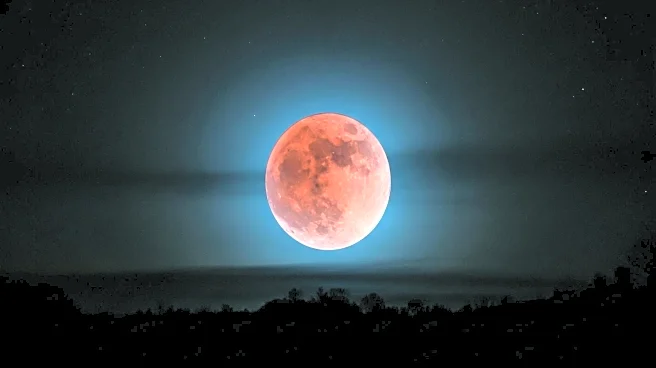What is the story about?
What's Happening?
A rare blood moon lunar eclipse is set to occur on the night of September 7, offering a spectacular celestial event for sky watchers in Asia and Western Australia. The phenomenon, which will not be visible from North or South America, occurs when the Earth positions itself between the Moon and the Sun, causing the Moon to take on a reddish hue. This happens because the Earth's atmosphere scatters blue light, allowing only red light to reach the Moon's surface. The event will last for over five hours, with 82 minutes of totality. While the eclipse will not be visible in the Americas, enthusiasts can still participate by watching a live stream from the Virtual Telescope Project.
Why It's Important?
The blood moon lunar eclipse is a significant event for astronomers and space enthusiasts, as total lunar eclipses are relatively rare, occurring only about 29% of the time. This event provides an opportunity for educational outreach and public engagement in astronomy. The eclipse also highlights the intricate dynamics of celestial bodies and their interactions, offering a chance for scientific observation and study. For those in the path of the eclipse, it presents a unique opportunity to witness a natural phenomenon that underscores the beauty and complexity of the universe.
What's Next?
For those unable to view the eclipse directly, the next total lunar eclipse visible in North America is expected on March 3, 2026. This will be followed by a partial lunar eclipse in August 2026. Meanwhile, the Earth will experience a total solar eclipse next year, with Iceland being one of the prime locations for viewing. These upcoming events continue to offer opportunities for public engagement and scientific study, fostering a greater appreciation for astronomy.
AI Generated Content
Do you find this article useful?
